Quick search
CTRL+K
Quick search
CTRL+K

Liverpool is one of England’s most interesting cities to visit, and many travelers already have an some knowledge of not least the cultural and sporting life before coming to town. The Beatles with Paul McCartney and John Lennon at the forefront are from here, as are the city’s two football flagship clubs Liverpool FC and Everton.
Liverpool, of course, is far more than football and music. It is known as a cathedral city with two of the most spectacular church buildings in the country. The majestic Anglican Liverpool Cathedral and the Catholic Metropolitan Cathedral in modern architecture are both some of the landmarks of the city.
There are also many museums here. Some are centered around the former docks, which have been renovated, and now stand as one of the major tourist spots with both history, shopping and tasty gastronomic experiences. And of course, Liverpool as a maritime city can be discovered at a visit to the Docks Maritime Museum.
Liverpool’s location on the banks of the Mersey River is beautiful, and some of the city’s most famous buildings are here, with Pier Head and the Royal Liver Building and Albert Dock’s interesting museums a short walk away. It is by the way on the Royal Liver Building that you can see the so-called Liver Birds.
From Liverpool, it is not far to the high seas, to Wales’ hilly terrain or to another of the area’s major cities such as Manchester. Chester is also close to Liverpool and with many sights it is a nice destination for an interesting day trip.
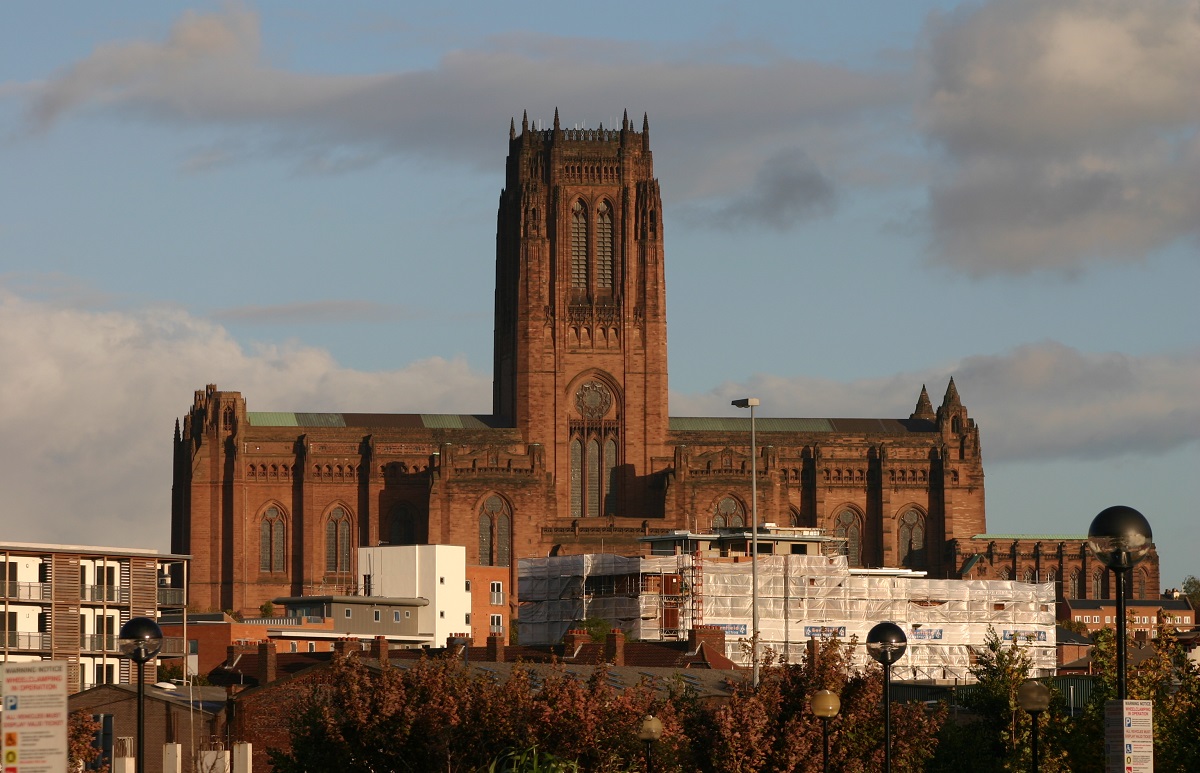
The Anglican Liverpool Cathedral stands majestically above the city on the ridge of St. James Mount. The substantial, skyward tower emphasizes the magnificence of the building, best seen from a distance from the docks on the River Mersey, which impresses both externally and internally.
In 1880, the city’s first bishop was installed. However, there was no cathedral, but only the smaller parish church of St. Peter’s Church. An architectural competition for a new and large cathedral was called after approval of the project in 1885. However, the winning proposal proved too large for the chosen location, and construction was dropped in favor of looking for a new, suitable site.
That search ended with St. James Mount, and after many years of debate two architects were put at the head of a new competition for the construction of the great cathedral in 1901. This time the choice fell on a proposal submitted by the only 22-year-old Giles Gilbert Scott. The original design had two towers and was changed during the early days of construction.
The foundation stone was laid by King Edward VII in 1904, and the church was completed in 1978 as the last large Gothic cathedral building in Europe. It is the city’s Anglican cathedral, the largest church building in England and one of the largest in the world. The event and the building itself were also of great significance for the Anglican Church. It was only the third cathedral to be built after the Reformation; the first two were St. Paul’s Cathedral in London and Truro Cathedral in the city of the same name.
The cathedral’s impressive dimensions are 189 meters in length and 101 meters in height. There are as many as 53 meters to the top of the vault under the church tower, which was built as the tallest in the world. The organ has almost 10,000 pipes, and among the bells here is the Great George weighing a whopping 14.5 tons.
From the tall church tower there are stunning views across Liverpool, the River Mersey and on a clear day you can see North Wales and Blackpool Tower in the seaside resort of Blackpool.
Pier Head is the name of the quay area where, among other things, the docks George’s Dock used to be located. George’s Dock was laid out in 1771, and by the end of the 19th century the outdated dock had become redundant for the port. The area was sold and developed. The place is now not least known for the three beautiful and quite different buildings that make up the so-called “Three Graces”; Royal Liver Building, Cunard Building and Port of Liverpool Building.
In the green area along Canada Boulevard, you can see memorial plaques for Canadians who fell during the Battle of the Atlantic. The battle was militarily directed from precisely Liverpool. There is also an equestrian statue of King Edward VII from 1921.
Several ferries operate from Pier Head, including the well-known Mersey Ferries, which run between Pier Head and the town of Birkenhead on the opposite bank of the River Mersey. The walk is fine, and Pier Head, the docks and Liverpool Cathedral are best and most beautifully seen from the water side. The ferries sail from George’s Landing Stage, where you can also sail to the Isle of Man. Incidentally, the quays at Pier Head were also the ones from which Atlantic liners sailed to North America. It originally happened from the Prince’s Landing Stage.
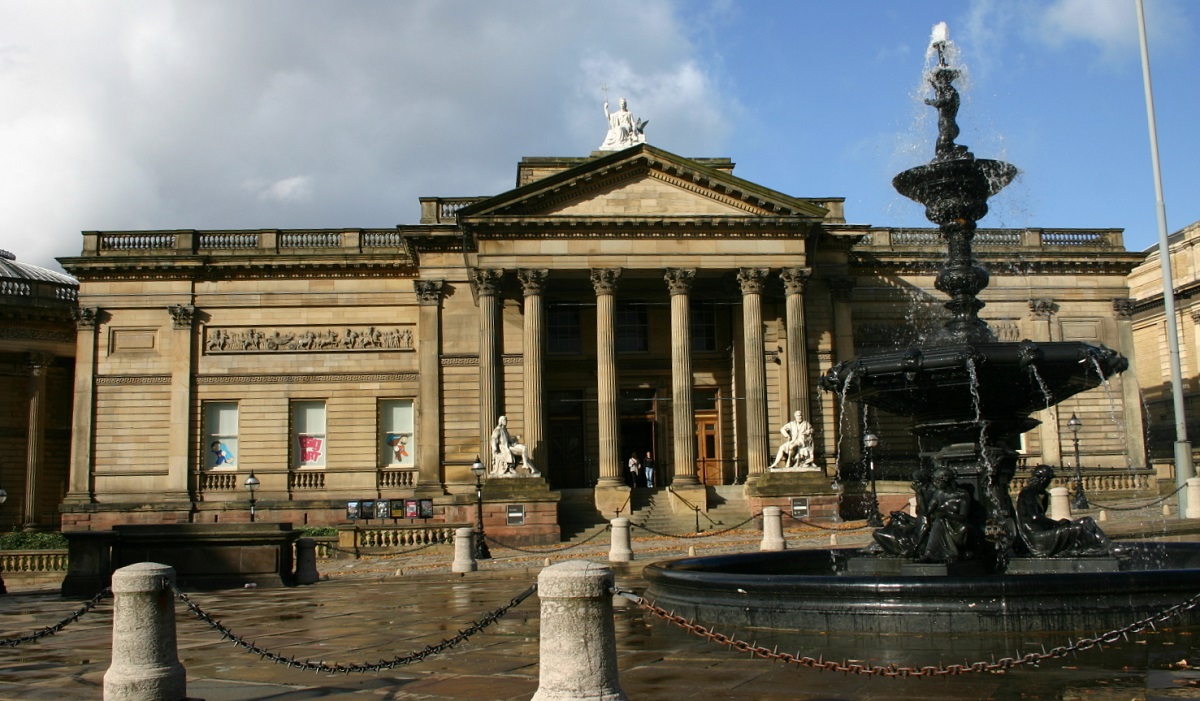
The Walker Art Gallery museum houses one of the largest art collections in England outside of London, and the place also calls itself the National Gallery of the North of England. The Walker Art Gallery opened in 1877 and is named after the patron Sir Andrew Barclay Walker who made its establishment possible.
One can enjoy an excellent collection of European art from the 14th century to the present day; among other things, you can enjoy Italian and Dutch painting from the 14th and 16th centuries. The so-called Pre-Raphaelite Brotherhood/Pre-Raphaelite Brotherhood from 1848 is also represented; they are known for the desire to create renewal in English art. As the name suggests, the aim was to go back to the time before Raphael and the High Renaissance.
There is also an exciting exhibition of modern British art, as well as a good collection of sculptures, paintings by French impressionists and much more.
Albert Dock is the centerpiece of Liverpool’s historic docks, which are listed as a UNESCO World Heritage Site. The building materials are mainly brick and cast iron, and when the building was completed in 1846, it was inaugurated by Queen Victoria’s consort, Prince Albert, who had the place named after him.
The buildings were constructed and arranged almost as combined wharves and warehouses. It was innovative and became a model for other port facilities in the world; e.g. in Buenos Aires, Argentina. Just two years after the inauguration, the world’s first hydraulic hoist was installed for the magazines.
The Albert Dock was hit by a bomb during World War II, but continued to operate. In 1972, the area was closed to ship traffic, and it was not until the 1980s that the docks were thoroughly renovated. Today, the areas that are home to, among other things, museums, restaurants and shops are flourishing. The quays themselves are used by yachtsmen on special occasions.
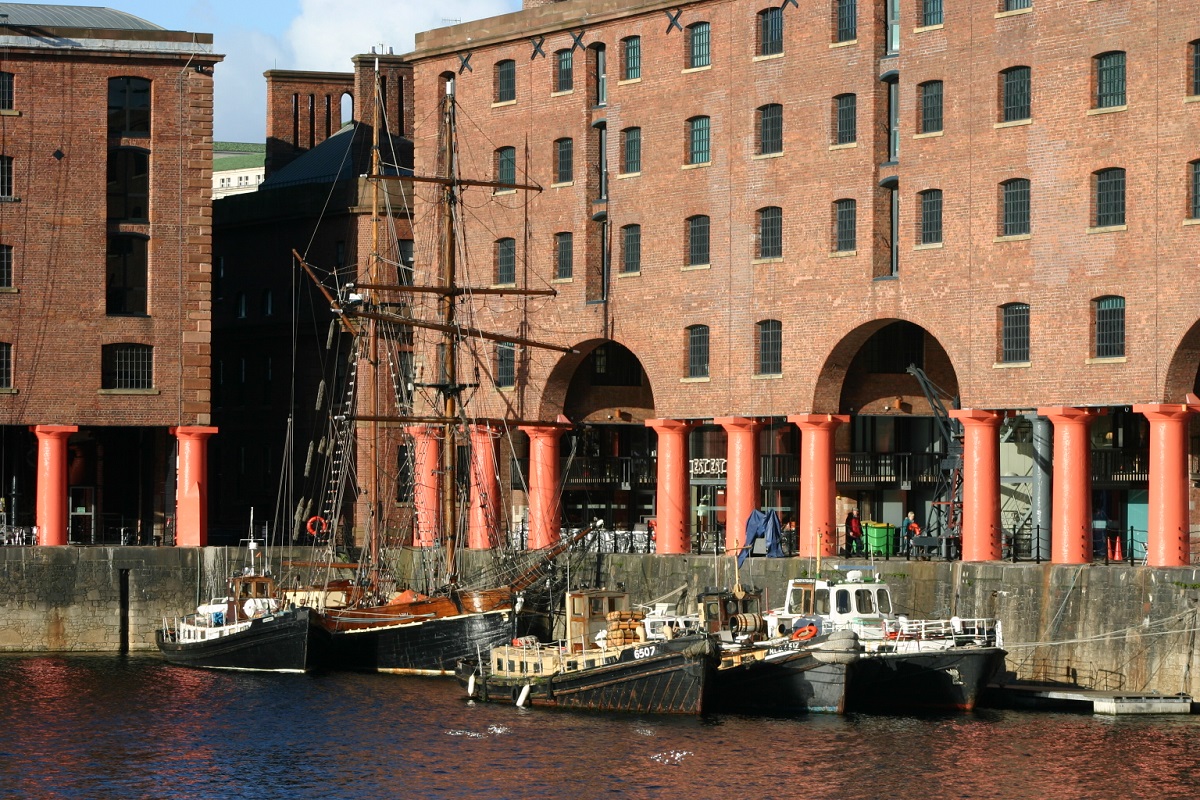
Liverpool was founded by the king in 1207 with the aim of creating fertile ground for a competitive port at the mouth of the River Mersey. It was completely successful, as Liverpool almost exploded from the 17th century onward in a trade development that was due to the ever-larger port facilities. Throughout much of the 20th century, activity declined in the docks, which in 2004 were added to UNESCO’s list of world heritage sites.
In the middle of the historic dock area of Albert Dock is this maritime museum, which is elegantly built with a mixture of information about how the docks came into being and developed, and the site’s floating department with several ships.
Among the highlights is the depiction of how the Battle of the Atlantic during World War II was conceived and controlled from Liverpool. The fates of large luxury liners such as the Titanic and the Lusitania are also illuminated in a context seen from Liverpool.
In the basement of the museum there is a special section for the history of customs clearance, smuggling and work at the borders; Seized! The Border and Customs uncovered.
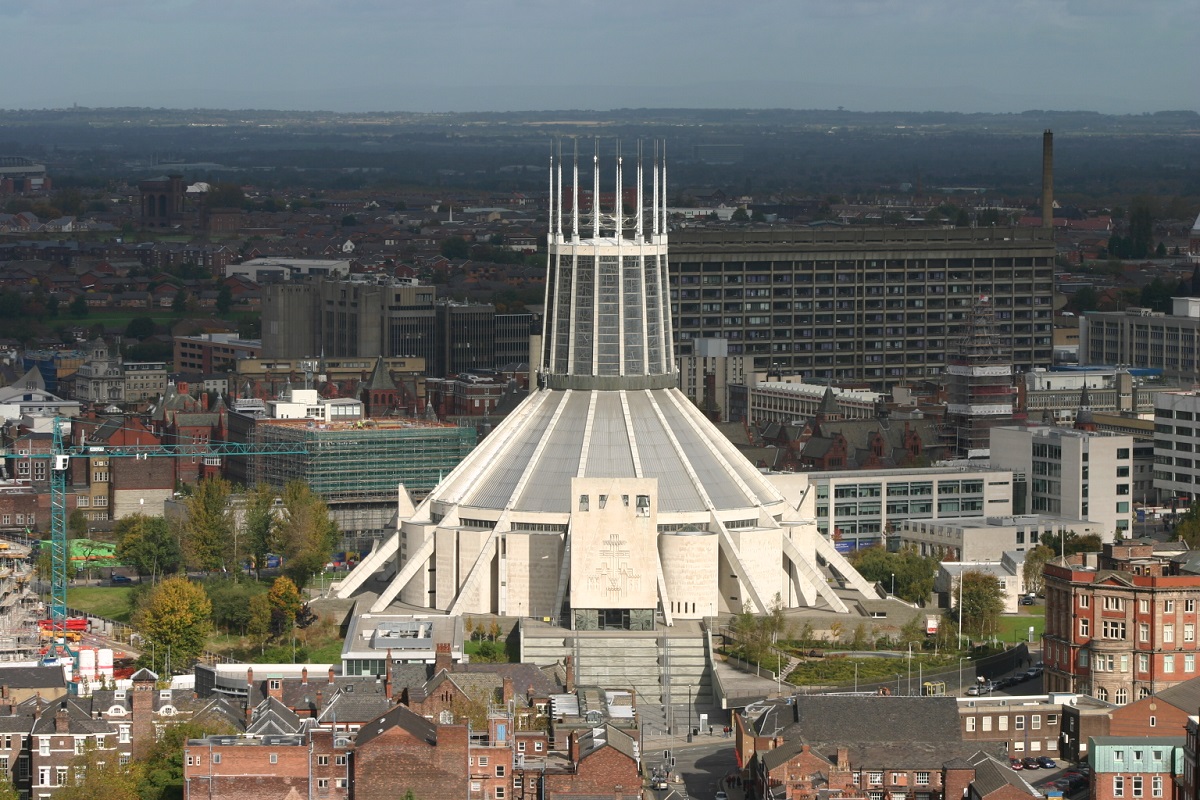
The Metropolitan Cathedral is Liverpool’s Roman Catholic cathedral. It stands high in the landscape at the end of Hope Street, which in its line starts from the Anglican cathedral, Liverpool Cathedral.
The construction of the originally intended church was started in 1933, and it was to become the world’s second largest church with the world’s largest dome. The impressive dimensions were to ensure a worthy match for Liverpool Cathedral, which was under construction.
With the outbreak of the Second World War, the massive construction came to a standstill. At the time, not even the crypt was completely finished, and architect Sir Edwin Lutyen’s plans would be too expensive to carry out after the war.
A new architectural competition was therefore launched, and the result was the current cathedral, which was designed by Sir Frederick Gibberd. Construction began in 1962, and the cathedral was completed and could be consecrated in 1967.
The Metropolitan Cathedral is circular in ground plan, and the central part consists of a multicolored glass lantern that reaches a height of 87 meters. The interior space is very bright and spacious and is absolutely worth seeing for the modern and unusual decor. Lutyen’s crypt can also be seen, and it hosts the city’s annual beer festival, among other things.
The 90 meter high Royal Liver Building is one of Liverpool’s landmarks and considered by many to be the most beautiful building on the Pier Head and in the city. The building was completed in 1911 according to Walter Aubrey Thomas’ drawings and built as headquarters for the Royal Liver Group.
The Royal Liver Building is one of the earliest examples of concrete high-rise buildings. The distinctive form of Gothic-inspired style has subsequently provided stylistic features for the construction of the Municipal Building in New York and Josef Stalin’s “Seven Sisters” in Moscow.
The building’s two towers are a distinctive architectural feature. The large clocks, which sailors could set their own clocks after, are approximately 8 meters in diameter larger than Big Ben in London. The clocks were originally called George Clocks, as they were started at exactly the time when King George V was crowned in 1911.
At the top of each of the two towers stands a statue of the mythical bird, the Liver Bird. According to tradition, one bird watches over the city to protect its people, while the other bird looks out to sea for sailors on their way to port. It is also said that if one of the birds disappears, Liverpool will perish, so naturally the statues are firmly attached to the towers.
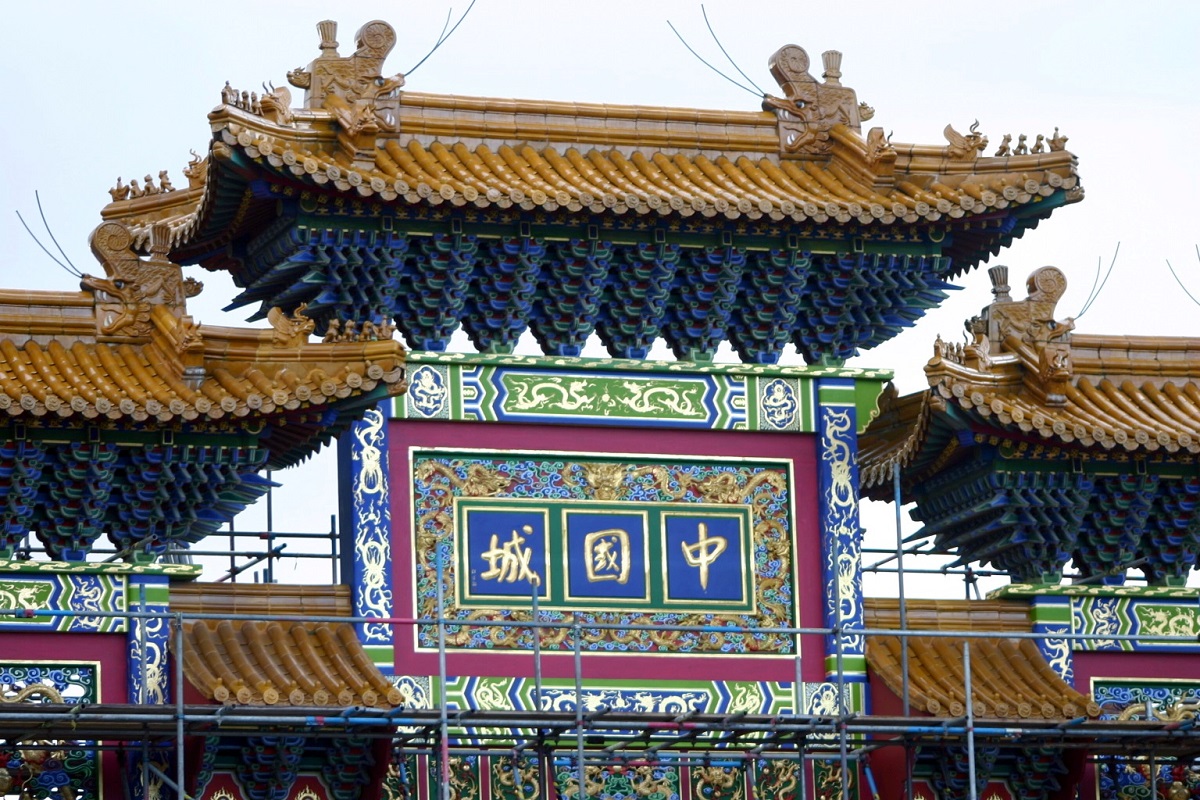
On Duke Street at the entrance to Nelson Street, you can see a Chinese gate as a symbol of the Chinese district, Chinatown. In Chinatown you experience a Chinese touch, which is primarily seen in shops and eateries.
Liverpool’s Chinatown is one of the oldest Chinese communities in Europe. It started in the 19th century with the shipping company Alfred Holt and Company’s increasing traffic in and trade with Chinese ports, which in addition to goods also brought Chinese people to the English port city.
The Museum of Liverpool is Liverpool’s city museum, but its exhibition extends far beyond the city’s own borders. The city’s importance in world trade and shipping is also a recurring theme at the museum, which opened its doors in 2011.
There are several overarching themes in the review of Liverpool across the board. The city’s urban and technological history is one of the main themes, where Liverpool’s importance to the British Empire is also told.
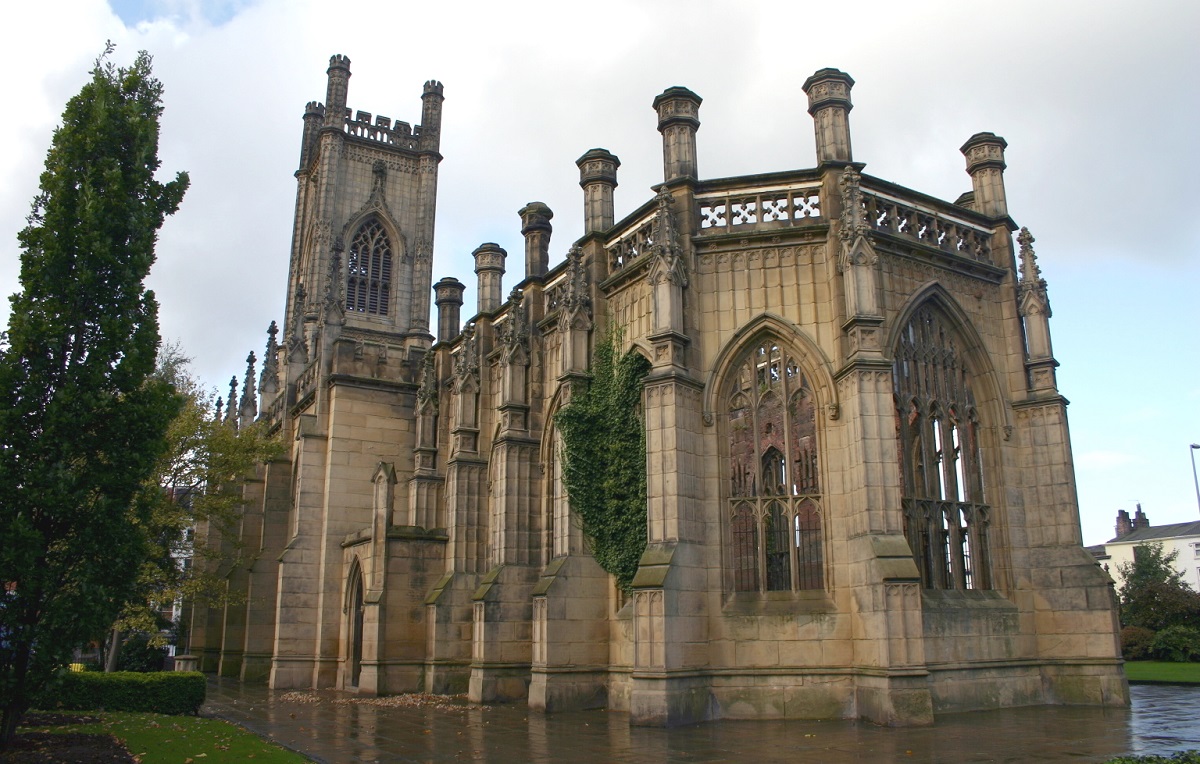
St. Luke’s Church is a church that was built from 1811 and consecrated in 1832. During the so-called Liverpool Blitz during World War II, the church was hit by an incendiary bomb in 1941. After the war, it was decided to let it stand as a monument to those who fell during the war , and St. Luke’s Church thus stands as a fire ground with only the outer walls and tower remaining.
The cemetery, which has never been used for burials, has now been converted into a small park where you can find the Irish Famine Memorial, which is a monument commemorating the extensive famine that affected the Irish population in the mid-1800s. Liverpool played a special role for the Irish in that connection, with many leaving for America from the city’s docks. However, a large number also remained in the city, thereby creating a larger Catholic community in Liverpool.
Empire Theater is Liverpool’s largest theater with room for more than 2,300 spectators. The theater opened as the second theater on the site in 1925 and was built in a stately design to match the other grand buildings around William Brown Street. The first theater was the New Prince of Wales Theater and Opera House, and it opened its doors as the city’s largest stage in 1866.
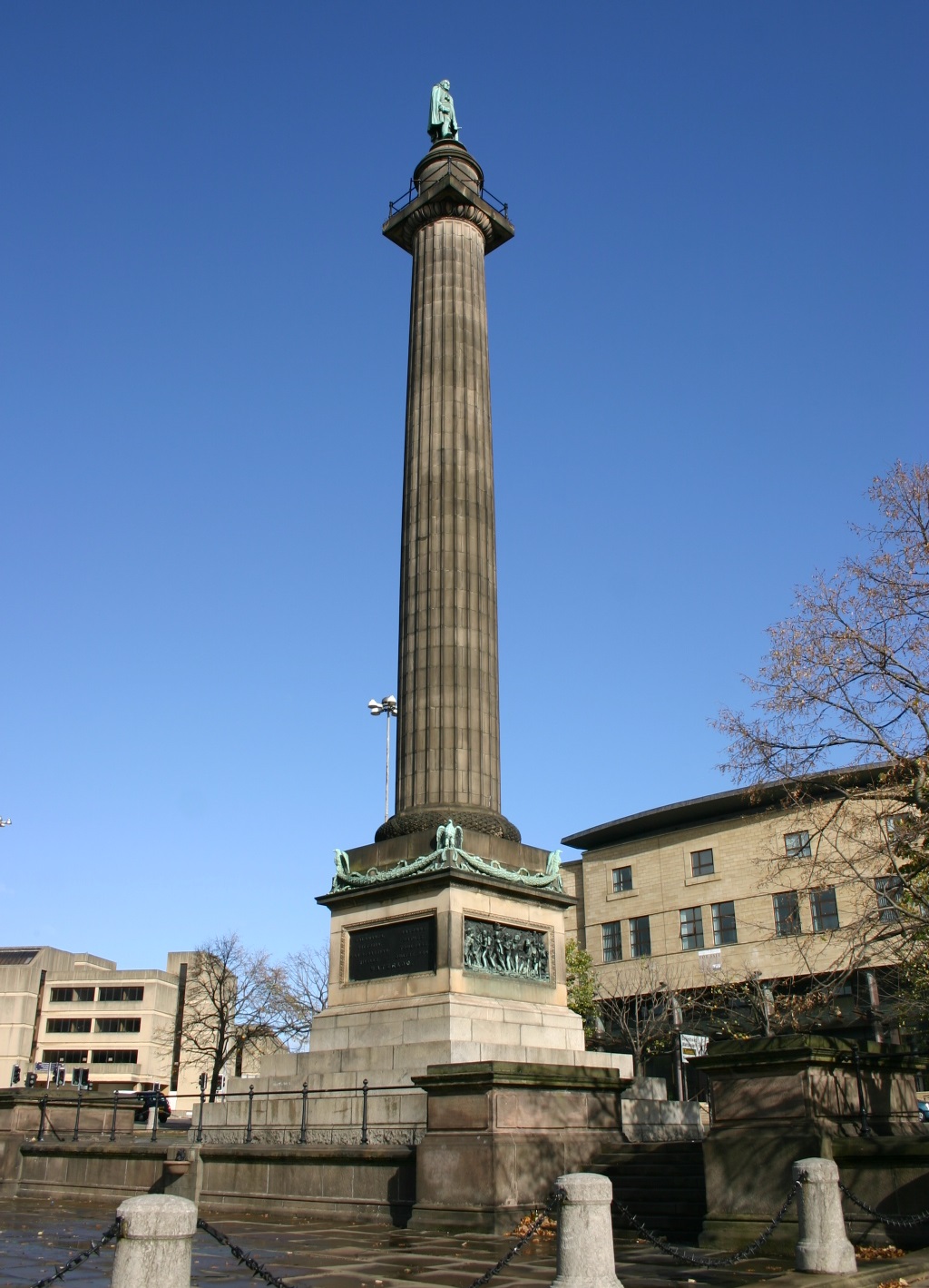
Wellington’s Column is a 40 meter high column that was erected in 1874-1875 as a memorial to Arthur Wellesley’s victories during the Napoleonic Wars. Wellesley bore the title of Duke of Wellington, and hence the column’s name.
The memorial consists of a central Doric column with Wellington on top. On it can be seen symbols of Wellesley’s four greatest victories; Badajoz, Talevera, Vitoria and Waterloo.
The statue of Wellesley itself was cast from French cannons from Waterloo, and Wellesley was positioned so that he is looking towards the very Waterloo that is considered his greatest victory.
The grand St George’s Hall is one of Liverpool city centre’s largest historic buildings. It stands like a colossal temple in neoclassicism, enthroned in the middle of the complex of public buildings around William Brown Street.
In the period 1749-1824, the city’s first infirmary was located on this site. In 1836, it was decided to build a hall for festivals and concerts, and it became St. George’s Hall, which was built in the period 1841-1854. Inside there are two functions; a concert hall and various courtrooms. The concert hall is located in the rectangular room in the middle and measures 52×23 meters in ground plan. There are 25 meters to the vaulted ceiling. At each end of the building there are different courts.
East of the building is the square St. George’s Plateau, where, among other things, there are equestrian statues and the distinctive, elongated war memorial from 1930.
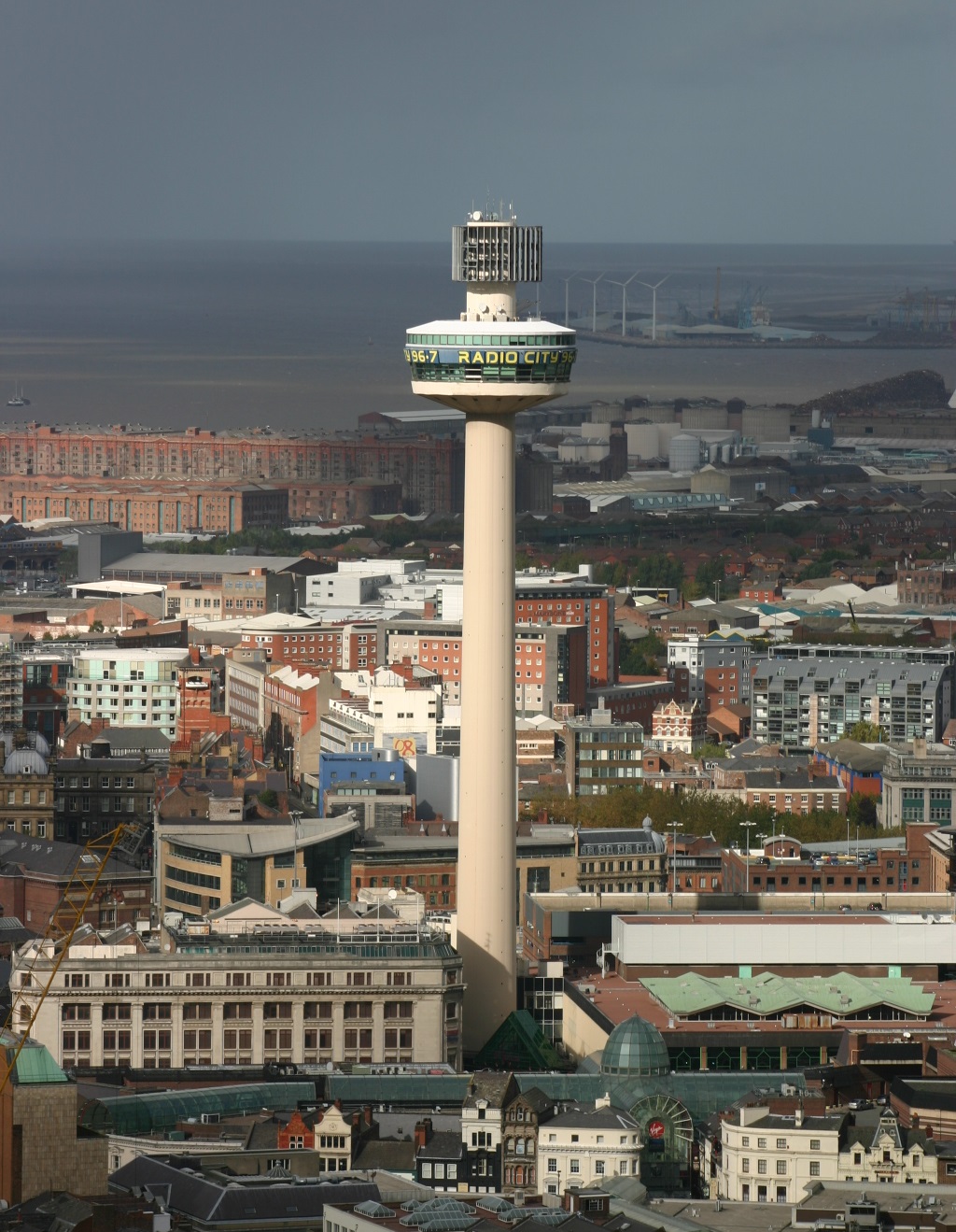
Radio City Tower is a 148 meter high tower that opened in 1969 under the name St. John’s Beacon. The name comes from the shopping center St. John’s Market, located at the foot of the tower, which was then also built as the ventilation chimney for this particular centre.
From the start, there was a rotating restaurant and a viewing platform in the tower, but both places both closed and reopened several times. In the year 2000, the tower opened as the Radio City Tower, and there is again access to the observation deck, from which there is a fine view of the city.
The Cavern Club is the rock and roll club in the center of Liverpool, where the Beatles’ later manager, Brian Epstein, was introduced to the band in 1961. The club opened as a jazz club in 1957, but within a few years became a place that also hosted beat- evenings.
On 21 February 1961, the Beatles played here for the first time, and through 1961-1962 they gave 292 concerts in the club. Later, many other big names also gave concerts here; e.g. the Hollies, Elton John and the Rolling Stones. The club is still open and has, as far as possible, been kept in the style and structure from earlier times.
At the end of Castle Street, named after Liverpool’s historic castle, is Liverpool’s beautiful town hall, the Town Hall. The foundation stone was laid in 1749, and in 1754 the beautiful building was completed. There is a facade with Corinthian columns both facing Castle Street and on the opposite side.
The Town Hall’s ground floor was originally intended as a trading post, but it never achieved the planned success. A fire in 1795 destroyed the entire interior, which could then be changed. The newly decorated building housed, among other things, the mayor’s residence, city council hall, administrative offices for e.g. the police and a public meeting hall.
The lavish decoration can already be seen in the entrance area and by the central staircase. By the stairs you can see a statue of the local MP George Canning, who in 1827 was also Prime Minister. There is also a painting of Queen Elisabeth II, and at the top is the impressive dome.
The large hall Ballroom measures 27 x 12.8 meters and it has a 12 meter ceiling. Here hang some of Europe’s finest candelabra from the Georgian era. They were manufactured in Staffordshire in 1820.
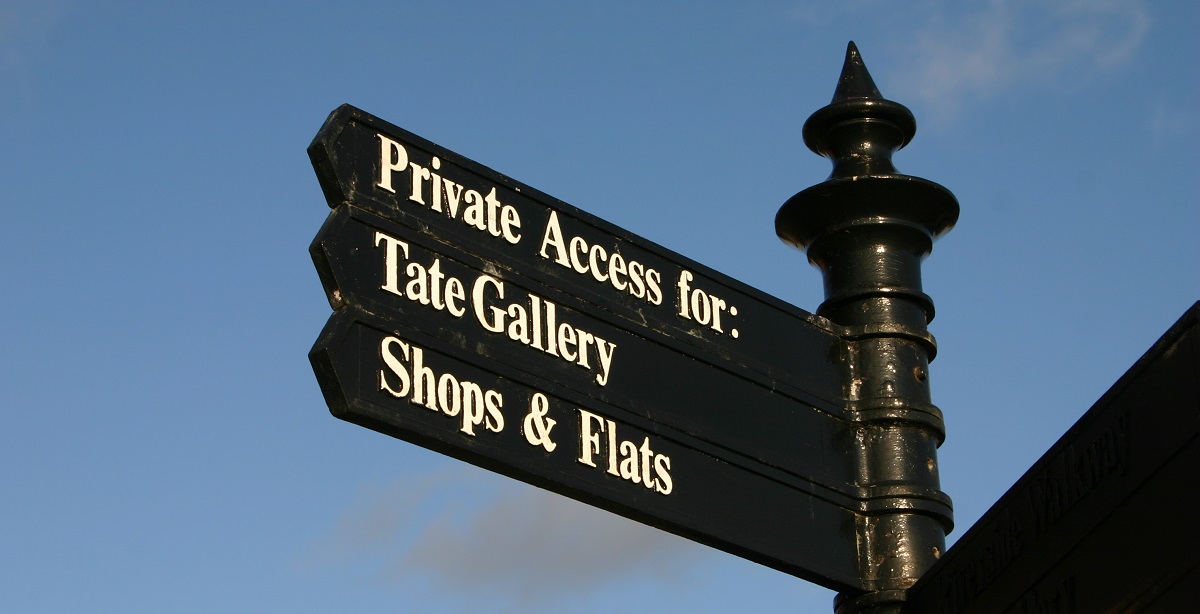
The Tate Liverpool art museum is a branch of the Tate museums in London. It is now one of the country’s leading places outside of London for modern art, and you can see various forms of expression such as photographs, installations, films, paintings and sculptures. The period covers from the year 1900 to the present day, and exciting themed exhibitions are regularly arranged in the exciting halls of Albert Dock’s historic magazines.
When John Houlding established the club Liverpool F.C. in 1892. and home ground Anfield, he laid the foundation for a great success. Liverpool F.C. is today one of the world’s most famous and successful football clubs of all time. English championships, FA Cups and trophies from UEFA’s European club competitions have countless times found their way to the club, which has large followings all over the world.
You can go on a fantastic tour of the home ground Anfield Road, where the club’s history is told from the beginning to the present day. Among the highlights are the famous “This is Anfield” sign and the song “You’ll never walk alone”, both of which make visiting players nervous about entering the impressive arena.
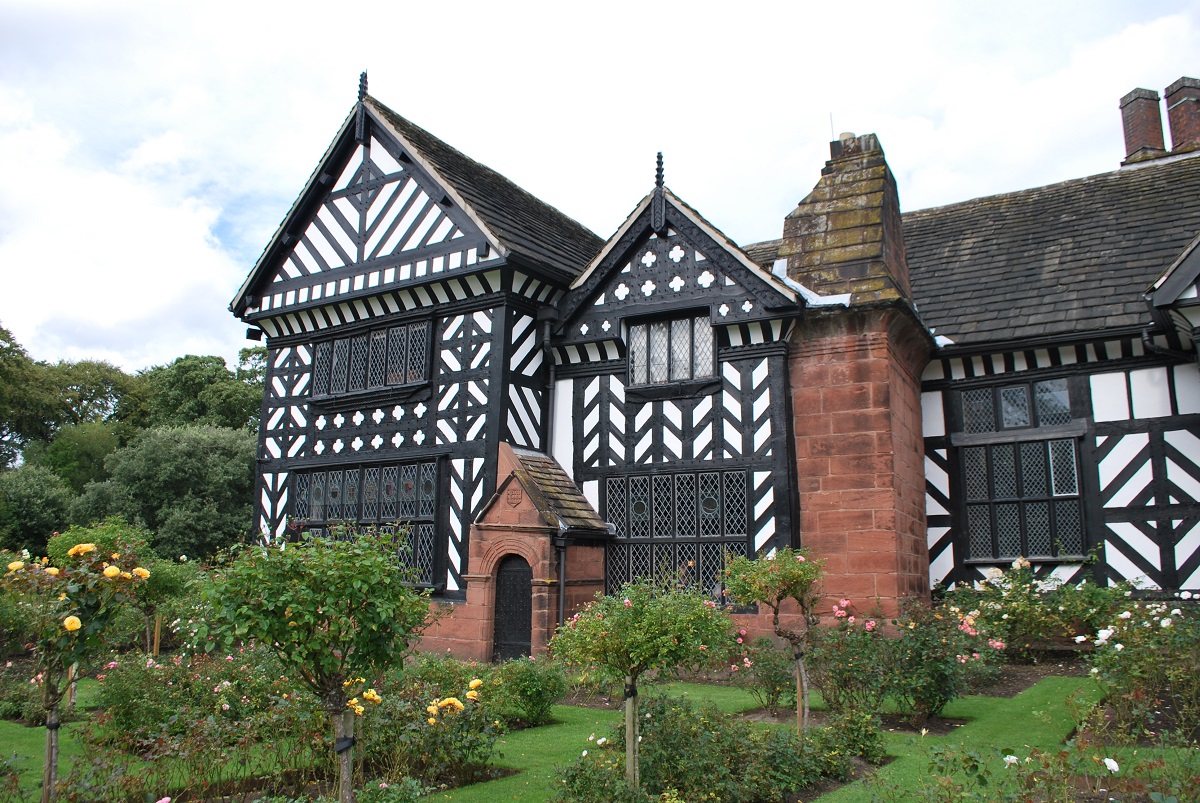
The Speke Hall residence is a building that was built in the noble Tudor style. The current Speke Hall was built from 1530. However, there was previously a residence here, traces of which can still be seen in some of the building parts.
In the period 1530-1598, Speke Hall was continuously expanded, and the last time was in 1598, when Edward Norris built a north wing. The Norris family were residents of Speke Hall for generations.
The interior is beautiful with many details from a bygone era. You can see, for example, a so-called priest hole, where Catholic priests could hide in Anglican England. Outside is the park, which was laid out in the 1850s.
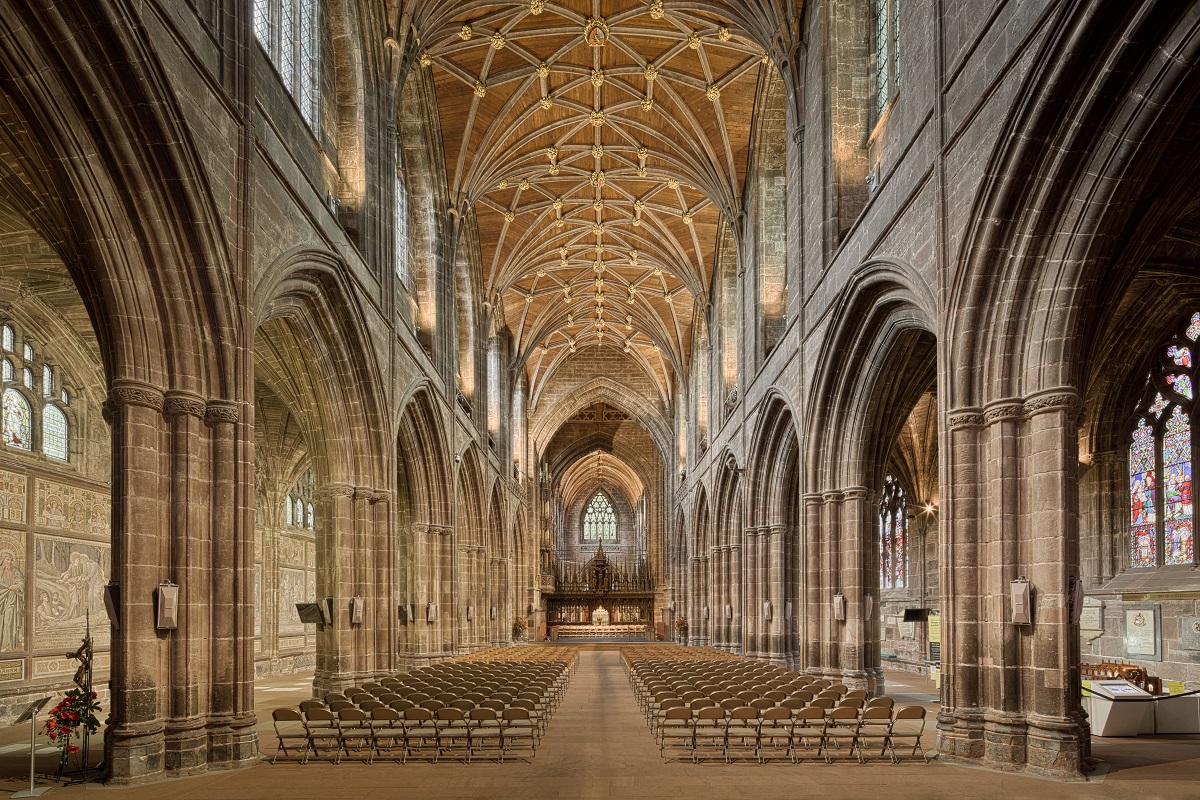
Chester is a city located close to Wales in the area south of Liverpool. The city was founded by the Romans around the year 70 with the name Deva Victrix, and the city was one of the most important in Roman England. After the withdrawal of the Romans, the settlement continued, and the Anglo-Saxons expanded the city walls as a defense against Vikings.
Later, the port of Chester became the country’s busiest river port and the city enjoyed great success as a trade post. However, the River Dee silted up, causing nearby Liverpool to grow. Chester flourished again in the Georgian era, and with the Industrial Revolution the city became home to many of the upper classes, unlike the industrial cities of Liverpool and Manchester.

Manchester, with its more than two million inhabitants, is one of the largest urban in England areas outside London, and as a tourist you will experience an exciting and thriving cultural life and a lot of activities in the historic industrial city. The cozy center with many prestigious buildings from the decades around 1900 is especially good for many walks.
The city of Manchester itself is the heart of the industrial area, where not least textile production laid the foundation for the area’s prosperity and growth. The many industrial buildings still leave their mark on the city center and surroundings, and among the many highlights are the old Liverpool Road Railway Station and the Science and Industry Museum.
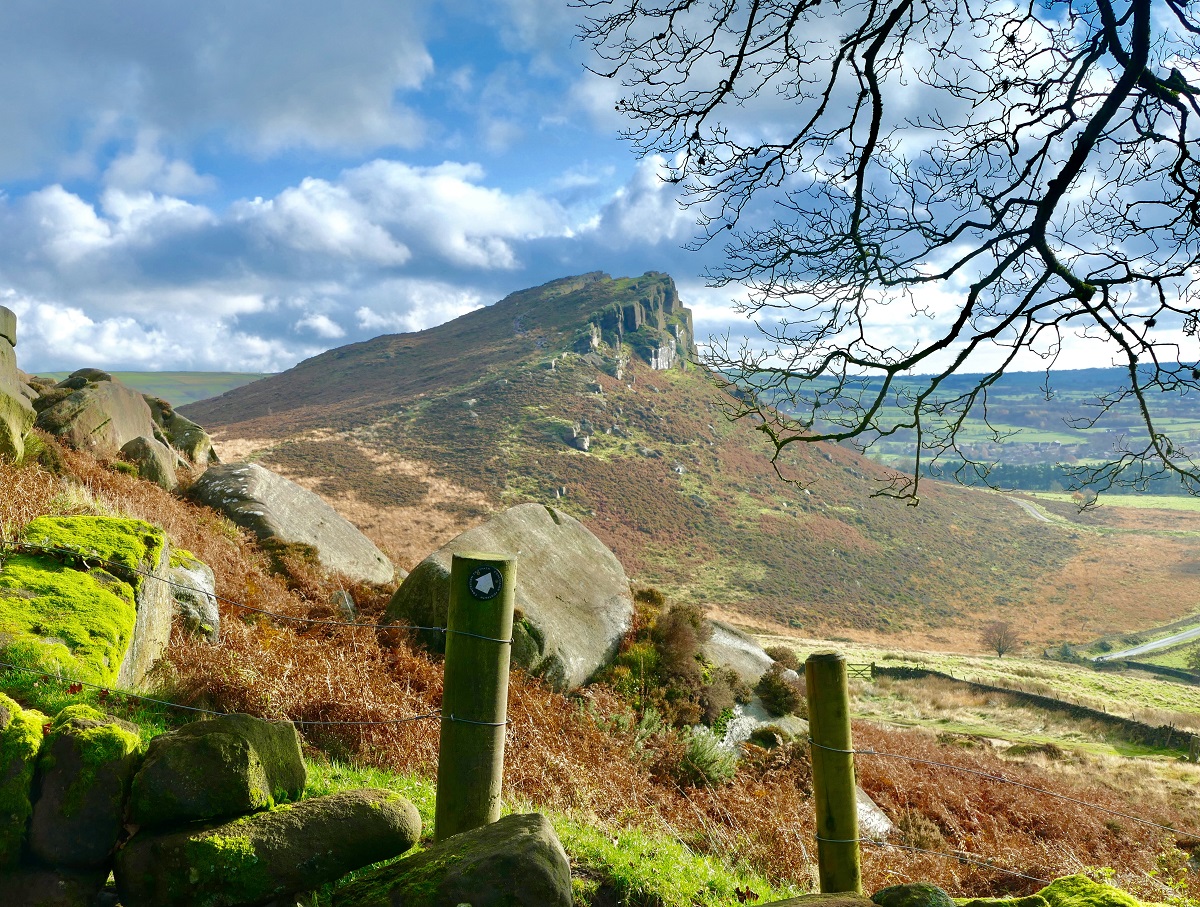
The Peak District is a national park located in the area between the cities of Manchester, Stoke, Derby and Sheffield. The size of the park is approximately 30×50 km, and there is a wealth of cultural and natural experiences in the beautifully hilly landscape. The Peak District was made a national park in 1951 and was thus the first in the country with this status.
The park is mainly at an altitude of more than 300 metres, and the highest point is Kinder Scout at 636 metres. The mountains are generally rounded with soft rock formations here and there. Among the beautiful nature experiences there are small farms, cozy towns and a number of activity opportunities for the many tourists who visit the area.
The spa town of Buxton is the Peak District’s largest town. Over the centuries, the city’s hot springs have attracted guests, and in addition to wellness, Buxton offers beautiful architecture, the beautiful Pavillon Gardens, a city and art museum, and the city’s opera house.
At the town of Castleton lie the ruins of Peveril Castle, whose history dates back to the 12th century. Castleton is also the starting point for a trip to the fascinating Speedwell Caverns, where you can go on a boat trip. Adjacent to Speedwell Caverns is a link to the 141 meter high cave Titan.
In the Peak District you can also get close to English industrial history. In Matlock Bath there is a mining museum and on the Derwent River is the Derwent Valley Mills, included in the UNESCO World Heritage List. Derwent Valley Mills dates back to the 18th century and found success through cotton spinning in a new way.
Historic transport can be sampled on the preserved Matlock-Rowsley railway line, where steam trains run. If you want to drive further, the large tramway museum, the National Tramway Museum, is located in the town of Crich. Trams run here from most of England and from, for example, New York and Johannesburg abroad.
8 Mathew Street
cavern-walks.co.uk
Clayton Square
claytonsquare.co.uk
5 Wall Street
liverpool-one.com
Whitechapel
metquarter.com
Williamson Square
stjohns-shopping.co.uk
Church Street, Lord Street, Mathew Street, Bold Street, Clayton Square, Whitechapel, Williamson Square
Blue Planet Aquarium
Chesire Oaks, Ellesmere Port
blueplanetaquarium.com
Catalyst Science Discovery Centre
Mersey Road, Widnes
catalyst.org.uk
Everton FC Stadium Tour
Goodison Avenue
evertonfc.com
Knowsley Safari Park
Prescot, Merseyside
knowsley.com/safari
Liverpool FC Museum and Stadium
Anfield Road
liverpoolfc.tv
Spaceport
Seacombe, Wirral
spaceport.org.uk
World Museum Liverpool
William Brown Street
worldmuseumliverpool.org.uk
Liverpool’s official history dates back to 1207, where documents signed by King John announce that a settlement named “Livpul” will be established where people were invited to settle.
It is believed that the king wanted to get a port city in the area which was not under the Earl’s control, and Livpul lay with easy access to the sea and for sailing to Ireland.
A defense work was erected, Liverpool Castle, in 1235, and already in these early years of the city’s history it was used as a shipping port for troops to Ireland.
Very early, a marketplace was also set up where the migrants traded fish and agricultural products. This was the case for a couple of centuries, when Liverpool was just a small village. In the mid-1300s, around 1,000 inhabitants lived here, and that was even in good times.
Thus, in the 16th century, the population had dropped to about 600, and while local trade was going on, the town was considered inferior to Chester.
Towards the End of the 16th Century, it was a smaller town that lay at the mouth of the River Merseys. With just 600 residents and still tougher economic times, the city’s citizens wrote to Queen Elizabeth I asking for a tax cut.
That time should prove to be the low point in Liverpool’s development, soon after growth and new trade opportunities appeared.
The 17th century brought flourishing with rising trade. From the outset, the good location for a port was now beginning to gain momentum, and thus the trade increasingly moved from the city of Chester to Liverpool. Increasing sanding of the River Dee accelerated this development as Chester became less accessible to the merchant ships.
In 1626, King Charles I granted Liverpool a number of extended mercantile rights, further stimulating trade from here to Ireland, the Isle of Man and other places such as America. The first cargo from America was landed in 1648, and within a few years considerable sailing developed in the West Indies and British America. By that time Liverpool had already grown significantly since the hard times of the 16th century.
Ship traffic and the many jobs that came with it caused new residents to settle in Liverpool, which grew rapidly. So did the industry, for example, the first sugar refinery was opened in 1670. The sugar came with other goods such as tobacco with the ships, and from Liverpool’s port sailed with coal, salt and textiles. By this time Liverpool had become one of the most important English cities outside London.
In 1699 was the year when the first slave ship, the “Liverpool Merchant”, sailed from Liverpool. Of course, there were no slaves from England, but it was a triangular trip between Liverpool, Africa and America, and on the first trip 220 African slaves were set off in Barbados.
The harbor was constantly expanded and in 1715 the world’s first wet dock was built here. The capacity was 100 ships, which was a huge number at that time.
At the same time as the port’s expansion, the resident merchant fleet increased significantly. Thus, by the end of the 18th century, 40% of the world’s and 80% of England’s lucrative slave traffic was associated with Liverpool. The peak was reached in 1799, when 45,000 slaves were sailed. The big profit turned Liverpool into a financial center that only the city of Bristol could compete with outside London; Bristol’s economy was also in positive development due to slaves. The slave trade for English colonies continued in the early 1800s and was completed in 1834.
The marked growth and internationalization through trade created the basis for new connections, and in 1790 the United States opened the world’s first consulate in the port city.
Throughout the 18th century, the population increased from 6,000 to 80,000, and Liverpool had become well connected with neighboring people; eg with a canal to Manchester in 1721 and small 100 years later to Leeds. Various institutions sprang up, and by 1726 the old 12th-century Liverpool Castle had been demolished to give way to the ambitions of the new city. Today, you can only see the street name Castle Street as a reminder of the castle and its location. Castle Street was the historic capital city from which the city grew significantly during the 1700s-1800s.
The 19th century was thus the sign of growth and industrialization. Industries, more inhabitants and more trade became commonplace. In 1830, the world’s first railway line opened between two major urban areas; the Liverpool and Manchester Railway, and in the period 1824-1858 16 kilometers of new berths were built in the city’s now large port.
In 1845-1849 there was a famine in Ireland, and in a few years so many Irish people came to Liverpool that the Irish population reached 25%. Their imprint on the city is still a legacy that can be seen and found in the city today; eg with the Catholic cathedral.
Liverpool’s international importance and prestige in the mid-19th century led to the erection of a number of stately buildings that signal a rich city. St. George’s Hall from 1854 is an example of this, and in 1892 the city’s university building was inaugurated.
The 20th Century began as another century of growth and optimism. Immigrants poured in from Wales and Italy, among others, and several buildings were erected; such as the Anglican Liverpool Cathedral and the city’s perhaps best known buildings on Pier Head with the Royal Liver Building at the forefront. The seafaring continued to be significant, the city being home to the shipping companies Cunard and White Star Line, whose flagship, HMS Titanic, was registered here and which was originally to be sailed from here and not from Southampton.
It was the recession of the economic crisis that hit the world and Liverpool in the 1920s. Unemployment became commonplace for a city that had otherwise seen uninterrupted growth for several centuries.
During World War II, Liverpool was hit by many bombings due to the industry and not least the important port. 2,700 lost their lives, and in large areas many houses were damaged. Central Liverpool was badly hit by the German Liverpool Lightning, which struck in the period 28 August 1940-10. January 1942.
In the post-war period, the city was quickly rebuilt, but many jobs had disappeared and trade in the otherwise busy port did not develop positively. From having had 850,000 citizens in the 1930s, only 460,000 remained in 1985, some of which lived in new suburbs.
Meanwhile, the culture flourished. It was in the 1960s that the so-called Merseybeat emerged in music, and with it one of the world’s greatest musical names; Liverpool group The Beatles. On the sporting side, the city’s flagship, Liverpool FC also won many trophies for the city, which also put on the world map.
The economic low reached the city in the 1980s. A large debt, high unemployment, crime, riots and football violence were part of Liverpool, but since the 1990s things have changed significantly. The city is again experiencing high growth, this time with tourism and cultural life as a dynamo. The city’s docks were listed on UNESCO’s World Heritage List in 2004 and in 2008 had the status of European Capital of Culture.
Overview of Liverpool
Liverpool is one of England’s most interesting cities to visit, and many travelers already have an some knowledge of not least the cultural and sporting life before coming to town. The Beatles with Paul McCartney and John Lennon at the forefront are from here, as are the city’s two football flagship clubs LFC and Everton.
The city, of course, is far more than football and music. It is known as a cathedral city with two of the most spectacular church buildings in the country. The majestic Anglican Cathedral and the Catholic Metropolitan Cathedral in modern architecture are both some of the landmarks of the city.
About the upcoming Liverpool travel guide
About the travel guide
The Liverpool travel guide gives you an overview of the sights and activities of the English city. Read about top sights and other sights, and get a tour guide with tour suggestions and detailed descriptions of all the city’s most important churches, monuments, mansions, museums, etc.
Liverpool is waiting for you, and at vamados.com you can also find cheap flights and great deals on hotels for your trip. You just select your travel dates and then you get flight and accommodation suggestions in and around the city.
Read more about Liverpool and England
Buy the travel guide
Click the “Add to Cart” button to purchase the travel guide. After that you will come to the payment, where you enter the purchase and payment information. Upon payment of the travel guide, you will immediately receive a receipt with a link to download your purchase. You can download the travel guide immediately or use the download link in the email later.
Use the travel guide
When you buy the travel guide to Liverpool you get the book online so you can have it on your phone, tablet or computer – and of course you can choose to print it. Use the maps and tour suggestions and you will have a good and content-rich journey.
Great Cathedrals • Football • Fine Museums • Music • Famous Docks
Overview of Liverpool
Liverpool is one of England’s most interesting cities to visit, and many travelers already have an some knowledge of not least the cultural and sporting life before coming to town. The Beatles with Paul McCartney and John Lennon at the forefront are from here, as are the city’s two football flagship clubs LFC and Everton.
The city, of course, is far more than football and music. It is known as a cathedral city with two of the most spectacular church buildings in the country. The majestic Anglican Cathedral and the Catholic Metropolitan Cathedral in modern architecture are both some of the landmarks of the city.
About the upcoming Liverpool travel guide
About the travel guide
The Liverpool travel guide gives you an overview of the sights and activities of the English city. Read about top sights and other sights, and get a tour guide with tour suggestions and detailed descriptions of all the city’s most important churches, monuments, mansions, museums, etc.
Liverpool is waiting for you, and at vamados.com you can also find cheap flights and great deals on hotels for your trip. You just select your travel dates and then you get flight and accommodation suggestions in and around the city.
Read more about Liverpool and England
Buy the travel guide
Click the “Add to Cart” button to purchase the travel guide. After that you will come to the payment, where you enter the purchase and payment information. Upon payment of the travel guide, you will immediately receive a receipt with a link to download your purchase. You can download the travel guide immediately or use the download link in the email later.
Use the travel guide
When you buy the travel guide to Liverpool you get the book online so you can have it on your phone, tablet or computer – and of course you can choose to print it. Use the maps and tour suggestions and you will have a good and content-rich journey.


The Metropolitan Cathedral is Liverpool’s Roman Catholic cathedral. It stands high in the landscape at the end of Hope Street, which in its line starts from the Anglican cathedral, Liverpool Cathedral.
The construction of the originally intended church was started in 1933, and it was to become the world’s second largest church with the world’s largest dome. The impressive dimensions were to ensure a worthy match for Liverpool Cathedral, which was under construction.
With the outbreak of the Second World War, the massive construction came to a standstill. At the time, not even the crypt was completely finished, and architect Sir Edwin Lutyen’s plans would be too expensive to carry out after the war.
A new architectural competition was therefore launched, and the result was the current cathedral, which was designed by Sir Frederick Gibberd. Construction began in 1962, and the cathedral was completed and could be consecrated in 1967.
The Metropolitan Cathedral is circular in ground plan, and the central part consists of a multicolored glass lantern that reaches a height of 87 meters. The interior space is very bright and spacious and is absolutely worth seeing for the modern and unusual decor. Lutyen’s crypt can also be seen, and it hosts the city’s annual beer festival, among other things.
The 90 meter high Royal Liver Building is one of Liverpool’s landmarks and considered by many to be the most beautiful building on the Pier Head and in the city. The building was completed in 1911 according to Walter Aubrey Thomas’ drawings and built as headquarters for the Royal Liver Group.
The Royal Liver Building is one of the earliest examples of concrete high-rise buildings. The distinctive form of Gothic-inspired style has subsequently provided stylistic features for the construction of the Municipal Building in New York and Josef Stalin’s “Seven Sisters” in Moscow.
The building’s two towers are a distinctive architectural feature. The large clocks, which sailors could set their own clocks after, are approximately 8 meters in diameter larger than Big Ben in London. The clocks were originally called George Clocks, as they were started at exactly the time when King George V was crowned in 1911.
At the top of each of the two towers stands a statue of the mythical bird, the Liver Bird. According to tradition, one bird watches over the city to protect its people, while the other bird looks out to sea for sailors on their way to port. It is also said that if one of the birds disappears, Liverpool will perish, so naturally the statues are firmly attached to the towers.

On Duke Street at the entrance to Nelson Street, you can see a Chinese gate as a symbol of the Chinese district, Chinatown. In Chinatown you experience a Chinese touch, which is primarily seen in shops and eateries.
Liverpool’s Chinatown is one of the oldest Chinese communities in Europe. It started in the 19th century with the shipping company Alfred Holt and Company’s increasing traffic in and trade with Chinese ports, which in addition to goods also brought Chinese people to the English port city.
The Museum of Liverpool is Liverpool’s city museum, but its exhibition extends far beyond the city’s own borders. The city’s importance in world trade and shipping is also a recurring theme at the museum, which opened its doors in 2011.
There are several overarching themes in the review of Liverpool across the board. The city’s urban and technological history is one of the main themes, where Liverpool’s importance to the British Empire is also told.

St. Luke’s Church is a church that was built from 1811 and consecrated in 1832. During the so-called Liverpool Blitz during World War II, the church was hit by an incendiary bomb in 1941. After the war, it was decided to let it stand as a monument to those who fell during the war , and St. Luke’s Church thus stands as a fire ground with only the outer walls and tower remaining.
The cemetery, which has never been used for burials, has now been converted into a small park where you can find the Irish Famine Memorial, which is a monument commemorating the extensive famine that affected the Irish population in the mid-1800s. Liverpool played a special role for the Irish in that connection, with many leaving for America from the city’s docks. However, a large number also remained in the city, thereby creating a larger Catholic community in Liverpool.
Empire Theater is Liverpool’s largest theater with room for more than 2,300 spectators. The theater opened as the second theater on the site in 1925 and was built in a stately design to match the other grand buildings around William Brown Street. The first theater was the New Prince of Wales Theater and Opera House, and it opened its doors as the city’s largest stage in 1866.

Wellington’s Column is a 40 meter high column that was erected in 1874-1875 as a memorial to Arthur Wellesley’s victories during the Napoleonic Wars. Wellesley bore the title of Duke of Wellington, and hence the column’s name.
The memorial consists of a central Doric column with Wellington on top. On it can be seen symbols of Wellesley’s four greatest victories; Badajoz, Talevera, Vitoria and Waterloo.
The statue of Wellesley itself was cast from French cannons from Waterloo, and Wellesley was positioned so that he is looking towards the very Waterloo that is considered his greatest victory.
The grand St George’s Hall is one of Liverpool city centre’s largest historic buildings. It stands like a colossal temple in neoclassicism, enthroned in the middle of the complex of public buildings around William Brown Street.
In the period 1749-1824, the city’s first infirmary was located on this site. In 1836, it was decided to build a hall for festivals and concerts, and it became St. George’s Hall, which was built in the period 1841-1854. Inside there are two functions; a concert hall and various courtrooms. The concert hall is located in the rectangular room in the middle and measures 52×23 meters in ground plan. There are 25 meters to the vaulted ceiling. At each end of the building there are different courts.
East of the building is the square St. George’s Plateau, where, among other things, there are equestrian statues and the distinctive, elongated war memorial from 1930.

Radio City Tower is a 148 meter high tower that opened in 1969 under the name St. John’s Beacon. The name comes from the shopping center St. John’s Market, located at the foot of the tower, which was then also built as the ventilation chimney for this particular centre.
From the start, there was a rotating restaurant and a viewing platform in the tower, but both places both closed and reopened several times. In the year 2000, the tower opened as the Radio City Tower, and there is again access to the observation deck, from which there is a fine view of the city.
The Cavern Club is the rock and roll club in the center of Liverpool, where the Beatles’ later manager, Brian Epstein, was introduced to the band in 1961. The club opened as a jazz club in 1957, but within a few years became a place that also hosted beat- evenings.
On 21 February 1961, the Beatles played here for the first time, and through 1961-1962 they gave 292 concerts in the club. Later, many other big names also gave concerts here; e.g. the Hollies, Elton John and the Rolling Stones. The club is still open and has, as far as possible, been kept in the style and structure from earlier times.
At the end of Castle Street, named after Liverpool’s historic castle, is Liverpool’s beautiful town hall, the Town Hall. The foundation stone was laid in 1749, and in 1754 the beautiful building was completed. There is a facade with Corinthian columns both facing Castle Street and on the opposite side.
The Town Hall’s ground floor was originally intended as a trading post, but it never achieved the planned success. A fire in 1795 destroyed the entire interior, which could then be changed. The newly decorated building housed, among other things, the mayor’s residence, city council hall, administrative offices for e.g. the police and a public meeting hall.
The lavish decoration can already be seen in the entrance area and by the central staircase. By the stairs you can see a statue of the local MP George Canning, who in 1827 was also Prime Minister. There is also a painting of Queen Elisabeth II, and at the top is the impressive dome.
The large hall Ballroom measures 27 x 12.8 meters and it has a 12 meter ceiling. Here hang some of Europe’s finest candelabra from the Georgian era. They were manufactured in Staffordshire in 1820.

The Tate Liverpool art museum is a branch of the Tate museums in London. It is now one of the country’s leading places outside of London for modern art, and you can see various forms of expression such as photographs, installations, films, paintings and sculptures. The period covers from the year 1900 to the present day, and exciting themed exhibitions are regularly arranged in the exciting halls of Albert Dock’s historic magazines.
When John Houlding established the club Liverpool F.C. in 1892. and home ground Anfield, he laid the foundation for a great success. Liverpool F.C. is today one of the world’s most famous and successful football clubs of all time. English championships, FA Cups and trophies from UEFA’s European club competitions have countless times found their way to the club, which has large followings all over the world.
You can go on a fantastic tour of the home ground Anfield Road, where the club’s history is told from the beginning to the present day. Among the highlights are the famous “This is Anfield” sign and the song “You’ll never walk alone”, both of which make visiting players nervous about entering the impressive arena.
Similar to Liverpool Travel Guide
